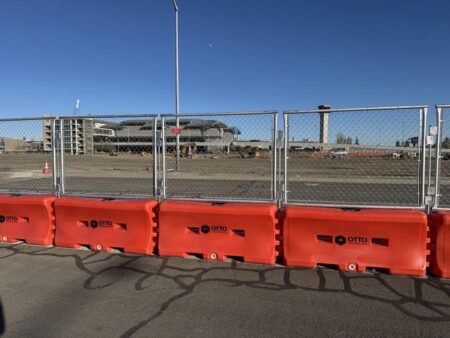A new study from the Insurance Institute for Highway Safety (IIHS) shows that pedestrian deaths in the USA have jumped 46% since reaching their lowest point in 2009, with the increase mostly in urban or suburban areas, at non-intersections, on arterials, and in the dark.
The number of pedestrians killed each year has declined 20% since 1975, but the 2016 toll was the highest since 1990. A total of 5,987 pedestrians were killed in crashes in 2016, accounting for 16% of all road fatalities.
For the new study, IIHS researchers looked at pedestrian crash trends during 2009-16 to pinpoint the circumstances under which the largest increases occurred. Using federal fatality data and crash numbers, the researchers looked at roadway, environmental, personal and vehicle factors to see how they changed over the study period, and also looked at changes in the number of deaths relative to the number of pedestrians involved in crashes overall.
The main findings of the study were:
• Not only did pedestrian crashes increase, they also became more lethal, with deaths per 100 crash involvements increasing by 29% from 2010;
• From 2009 to 2016, the largest increases in pedestrian deaths occurred in urban areas, with a rise of 54% in cities and their suburbs. They also increased 67% on arterial roads, 50% at non-intersections, and 56% in the dark.
• Although pedestrian crashes most frequently involved cars, fatal single-vehicle crashes involving SUVs increased 81%, more than any other type of vehicle;
• The power of passenger vehicles involved in fatal single-vehicle pedestrian crashes also increased;
• The largest increase in pedestrian fatalities per population was for people ages 20-69.
The report’s authors recommend:
• Improved urban street design, including additional sidewalks, curb extensions or median crossing islands, better use of beacons and signage, and reductions in the number of lanes to cross through ‘road diets’;
• Lower speed limits in urban areas, with broader use of speed cameras to enforce existing limits and reduce crash severity;
• Better street lighting and improved vehicle headlights;
• Greater use of vehicle front crash prevention systems with pedestrian detection;
• Vehicle design changes to lessen the severity of crashes, particularly for SUVs.
“Understanding where, when and how these additional pedestrian crashes are happening can point the way to solutions,” said IIHS president, David Harkey. “This analysis tells us that improvements in road design, vehicle design and lighting, and speed limit enforcement all have a role to play in addressing the issue.
“When people are forced to walk long distances to the nearest signalized intersection, they are more likely to choose the riskier option of sprinting across multiple lanes of traffic. Communities can improve safety by providing more options to safely cross. It’s not enough to simply paint more crosswalks on the pavement. Midblock crossings need features that alert drivers to stop, such as pedestrian-activated beacons. Good design should prioritize the safety of all road users. It’s possible to improve streets for pedestrians while still allowing vehicle traffic to get where it needs to go.”




